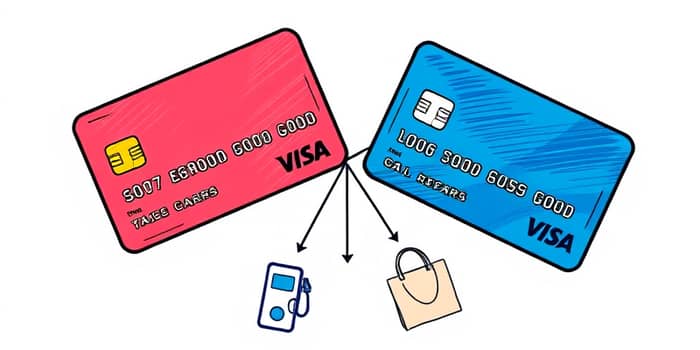
Unlocking the full potential of credit card rewards means more than carrying a single plastic piece in your wallet. By pairing two or more cards, you can leverage their strengths to earn top rewards on every purchase. This approach transforms everyday spending into a powerful tool for savings and travel adventures.
Pairing cards is not just a tactic but a mindset shift that empowers you to view each transaction as an opportunity. Before diving into specific pairings, let’s explore why this strategy offers such compelling value.
Card pairing involves strategically using two or more reward cards to capture the highest possible rewards for every category. One card might excel at groceries, another at dining or travel, and yet another may deliver a flat rate on miscellaneous expenses.
This method ensures you never leave bonus points on the table and prevents you from hitting bonus caps prematurely. Thoughtful pairing aligns your spending habits with each card’s strengths, resulting in greater overall value.
Reward cards generally fall into three main categories, each with distinct benefits and redemption options:
No single card offers the best return on every purchase. Most have specific bonus categories or spend caps that limit your upside. By combining multiple cards, you can:
This dynamic approach allows families and individuals to tailor rewards to their unique spending profiles, maximizing value at every turn.
A common foundation for card pairing is to hold one flat-rate card for uncategorized spend alongside a bonus-category card for targeted expenses. For instance, you could combine a 2% cash back card with a card that offers 5% back on rotating categories or 6% on groceries.
Consider this blueprint:
Together, these cards cover everyday spending with top-tier returns, ensuring you never default to a low-rate earning structure.
Let’s illustrate potential outcomes for a household that spends across multiple categories every month. The table below highlights which card to use for each major spend type:
Maximizing rewards often depends on fine details. Small adjustments in how and where you shop can increase your return significantly. Keep these tactics in mind:
To select the right cards, analyze your monthly spending pattern. Identify your largest categories and match them to cards with the highest rates. For many, groceries, dining and gas are top targets, followed by occasional travel or online purchases.
First, categorize your spending into major buckets: groceries, gas, dining, travel and miscellaneous. Then assign each category to the card offering the highest return, considering any spend caps or annual fees.
Next, keep a simple tracking system—whether a mobile app, spreadsheet or calendar alert—to note when rotating categories rotate and when you’ve reached any bonus caps. This ensures you always switch to the right card at the right time.
Lastly, pay off balances monthly in full to avoid interest charges that would negate your rewards gains. Discipline is the key to unlocking real savings without debt.
Pairing credit cards may seem complex at first, but with a clear strategy and regular monitoring, you can transform routine spending into significant rewards. By harnessing the power of multiple cards, each expense becomes a chance to boost cash back, points or miles.
Start today by auditing your recent statements, mapping your regular expenses, and identifying the cards that deliver the greatest impact. With patience and consistency, this approach will turn your everyday purchases into a steady stream of value, helping you reach your financial and travel goals faster than ever before.
References













